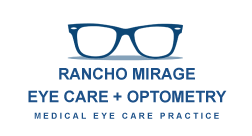 It’s likely that you know someone with myopia - a family member, friend, or work colleague. But how much do you really know about this progressive eye disease? Some parents expect that simply receiving a pair of glasses for their child is the only way of dealing with the effects of myopia. In truth, there’s much more to myopia and what you can do about it than meets the eye. Below, we’ll explore 4 facts about myopia that may inspire you to be more proactive about your child’s eye health and long-term vision.
It’s likely that you know someone with myopia - a family member, friend, or work colleague. But how much do you really know about this progressive eye disease? Some parents expect that simply receiving a pair of glasses for their child is the only way of dealing with the effects of myopia. In truth, there’s much more to myopia and what you can do about it than meets the eye. Below, we’ll explore 4 facts about myopia that may inspire you to be more proactive about your child’s eye health and long-term vision.
1. Myopia is an Eye Disease
Myopia is an eye disease where the eyeball grows too long, leading light to be focused in front of the retina instead of directly on it. Because the eye is elongated, incoming light doesn’t focus on the retina as it should, leading objects in the distance to appear blurry. As an example, If a normal eye is round like a basketball, a myopic eye would look more like a football. As this happens, the symptoms of the disease are blurry distance vision.
Because the eye elongates and grows with the rest of the body, naturally, it stops elongating once the rest of the body stops growing in early adulthood. This also means there may be times in a child’s development where they experience growth spurts—suddenly requiring a higher prescription due to an increase in their myopia. To help combat this, we recommend eye exams every six months to track myopia progress.
2. It’s More Common Than You Think
Myopia is an eye disease of epidemic proportions, affecting close to 2 billion people worldwide. We are currently on pace to have half of the world’s population with some degree of myopia by the year 2050! Indoor time, excessive ‘near work’, and genetic factors all play a role in the growth of myopia.
3. It’s a Progressive Condition
Myopia generally begins in childhood and progresses throughout the school-age years, usually stabilizing into the late teens.
Because the eye grows in tandem with the body, it’s only natural that it stops elongating once the rest of the body stops growing in early adulthood. This also means there may be times in a child’s development when they experience growth spurts and suddenly require a higher prescription. There are ways to effectively treat myopia in order to prevent it from progressing as the child grows. Slowing myopia early on can make all the difference to your child’s eye health as they age.
4. Myopia Puts Kids At Risk of Developing Future Eye Disease
Myopic children are significantly more likely to develop sight-threatening eye diseases and conditions, such as glaucoma, cataracts, macular degeneration, and retinal detachment later in life.
Children with high myopia have a 50% higher risk of developing glaucoma, are 3 times more likely to develop cataracts, and 6 times more likely to develop retinal detachment as adults than children who don’t have myopia.
Myopia is more than just a matter of clear vision — a child’s eye health is at stake. In fact, a study published in the Journal of Optometry and Vision Science noted that when parents provided their children with myopia management, the risks of developing myopic maculopathy fell by 40%.
Let Rancho Mirage Eye Care Optometry Help Your Child Manage Myopia
Rancho Mirage Eye Care Optometry offers customized contact lenses and special prescription eye drops, and our doctors develop personalized treatment plans for each child. We will be able to determine which treatment plan works the best for your child at the first consultation with your Rancho Mirage Eye Care Optometry doctor. Schedule a consultation now to find out more.
